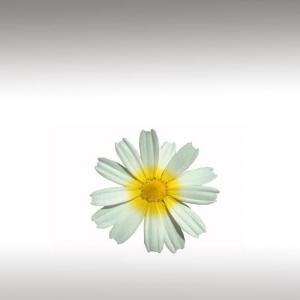
WILD MOROCCAN CHAMOMILE ESSENTIAL OIL (ORMENIS MULTICAULIS) - ESSENTIAL OILS

BASE / GENERAL DATA
Information submited: September 13, 2016 Modified: March 27, 2018 By: OperaDreamhouse
Botanical Name: Ormenis multicaulis, Ormenis mixta, Chamaemelum mixtum.
Botanical Origin: Morocco.
Common Method of Extraction: Steam distilled.
Part Typically Used: Stem and flower.
Color: Transparent yellow-green to yellow-brown.
Consistency:.Thin.
Perfumery Note: Top.
Shelf Life: 1-2 years.
Strength of Initial Aroma: Fresh, herbaceous, balsamic undertone, fruity-green fragrance, luscious and syrupy, with notes of apple and grenadine.
Blends Well With: Cedarwood, Cypress, frankincense, Lavender, Oakmoss, Vetiver essential oils.
Common name: Wild Chamomile and Moroccan Chamomile.
Chemical structure: This essential oil contains mainly terpenes with alpha-pinene being major, around a third of santolina and yomogi alcohols, some camphor and 1,8 cineole.
Alcohols 41% have antiseptic, bactericidal, antiviral, diuretic and immune stimulating properties.
Monoterpens 24% have antiseptic properties and are possible skin irritants.
Sesquiterpenes 9,7% have anti-inflammatory, antiviral, anti-allergenic and cooling properties.
Esters 3,5%have spasmolytic, sedative, anti-fungal properties. They can be mildly anti-inflammatory.
Note: Moroccan chamomile is not considered a True chamomile. It should not be used as a replacement for Roman or German oils in a blend, because it is chemically and aromatically different.
Moroccan Chamomile is an annual herb belonging to the Asteraceae (Compositae) family.
Moroccan Chamomile is different from the other Chamomiles in both chemical composition and scent. Moroccan Chamomile is used throughout the fragrance industry, commonly as a top note in colognes and perfumes. Ormenis Multicaulis is one of three varieties of Chamomile used in perfumery and cosmetics.
Significantly different from Matricaria Recutita (Blue Chamomile) or Chamomile Roman, Wild Maroccan Chamomile is native to northwestern Africa. It grows abundantly in the wild in northern Morocco and has been distilled in that country since the nineteen-seventies.
Wild Maroccan Chamomile blossoms in the spring, forming its characteristic flowers at the ends of stems that grow to more than one meter in height. The entire plant is hand-harvested on concessions allotted by the government and distilled fresh.
Wild Maroccan Chamomile is a perennial herb with hairy leaves. The flowers resemble small daisies, with sunny-yellow centers surrounded by white ligules. Most likely originally from northwest Africa, Ormenis Mixta has spread wild throughout the Mediterranean basin.
Moroccan Chamomile essential oil is not from a true Chamomile plant. It is used mainly in perfume blends, and for aromatherapy. This is a product new to the market, it does not have a long history of traditional uses like True Chamomile.
Botanical Origin: Morocco.
Common Method of Extraction: Steam distilled.
Part Typically Used: Stem and flower.
Color: Transparent yellow-green to yellow-brown.
Consistency:.Thin.
Perfumery Note: Top.
Shelf Life: 1-2 years.
Strength of Initial Aroma: Fresh, herbaceous, balsamic undertone, fruity-green fragrance, luscious and syrupy, with notes of apple and grenadine.
Blends Well With: Cedarwood, Cypress, frankincense, Lavender, Oakmoss, Vetiver essential oils.
Common name: Wild Chamomile and Moroccan Chamomile.
Chemical structure: This essential oil contains mainly terpenes with alpha-pinene being major, around a third of santolina and yomogi alcohols, some camphor and 1,8 cineole.
Alcohols 41% have antiseptic, bactericidal, antiviral, diuretic and immune stimulating properties.
Monoterpens 24% have antiseptic properties and are possible skin irritants.
Sesquiterpenes 9,7% have anti-inflammatory, antiviral, anti-allergenic and cooling properties.
Esters 3,5%have spasmolytic, sedative, anti-fungal properties. They can be mildly anti-inflammatory.
Note: Moroccan chamomile is not considered a True chamomile. It should not be used as a replacement for Roman or German oils in a blend, because it is chemically and aromatically different.
Moroccan Chamomile is an annual herb belonging to the Asteraceae (Compositae) family.
Moroccan Chamomile is different from the other Chamomiles in both chemical composition and scent. Moroccan Chamomile is used throughout the fragrance industry, commonly as a top note in colognes and perfumes. Ormenis Multicaulis is one of three varieties of Chamomile used in perfumery and cosmetics.
Significantly different from Matricaria Recutita (Blue Chamomile) or Chamomile Roman, Wild Maroccan Chamomile is native to northwestern Africa. It grows abundantly in the wild in northern Morocco and has been distilled in that country since the nineteen-seventies.
Wild Maroccan Chamomile blossoms in the spring, forming its characteristic flowers at the ends of stems that grow to more than one meter in height. The entire plant is hand-harvested on concessions allotted by the government and distilled fresh.
Wild Maroccan Chamomile is a perennial herb with hairy leaves. The flowers resemble small daisies, with sunny-yellow centers surrounded by white ligules. Most likely originally from northwest Africa, Ormenis Mixta has spread wild throughout the Mediterranean basin.
Moroccan Chamomile essential oil is not from a true Chamomile plant. It is used mainly in perfume blends, and for aromatherapy. This is a product new to the market, it does not have a long history of traditional uses like True Chamomile.

SPIRITUAL PRACTISES DATA

MEDICINE / HEALTH DATA
Information submited: September 13, 2016 Modified: March 27, 2018 By: OperaDreamhouse
Therapeutic Properties:
Mucolytic
Antimicrobial agent
General tonic.
Contraindications : No knowledge
Pregnancy / Lactation : Do not use during pregnancy and lactation (emmenagogue).
Children: Good oil to use on children (always well diluted, suitable for 6 months+).
While some claim that Moroccan Chamomile is not a True Chamomile, as it is steam-distilled from a Chamomile-like cousin perennial plant, yet this renegade oil responds with an incredible array of benefits for the skin as it it is rich with sesquiterpenes and azulenes. This essence also known as Ormenis offers herculean healing for body and soul.
While Moroccan Chamomile has its own useful properties, they are not the same as German Chamomile. Moroccan Chamomile is usually sold by the name "Ormenis oil". Ormenis is said to be good for skin problems such as acne, eczema, dermatitis, and cysts. It has also been used for rheumatism and is supportive of the gall bladder.
It is also known for its calming properties; and can relax stress and tension simply by inhaling the complex aroma of this oil. Soothing, calming and relaxing. Traditionally used as a muscle relaxant and skin conditioner.
Aromatherapists may recommend that you blend a couple of drops of Maroccan with Lavender in a burner or vaporiser and set it going half an hour before bedtime. It's also thought to help to relieve headaches and migraines and is a useful oil to have around in times of emotional stress.
It is considered to have antispasmodic, cholagogue, emmenagogue, hepatic and sedative properties.
Mucolytic
Antimicrobial agent
General tonic.
Contraindications : No knowledge
Pregnancy / Lactation : Do not use during pregnancy and lactation (emmenagogue).
Children: Good oil to use on children (always well diluted, suitable for 6 months+).
While some claim that Moroccan Chamomile is not a True Chamomile, as it is steam-distilled from a Chamomile-like cousin perennial plant, yet this renegade oil responds with an incredible array of benefits for the skin as it it is rich with sesquiterpenes and azulenes. This essence also known as Ormenis offers herculean healing for body and soul.
While Moroccan Chamomile has its own useful properties, they are not the same as German Chamomile. Moroccan Chamomile is usually sold by the name "Ormenis oil". Ormenis is said to be good for skin problems such as acne, eczema, dermatitis, and cysts. It has also been used for rheumatism and is supportive of the gall bladder.
It is also known for its calming properties; and can relax stress and tension simply by inhaling the complex aroma of this oil. Soothing, calming and relaxing. Traditionally used as a muscle relaxant and skin conditioner.
Aromatherapists may recommend that you blend a couple of drops of Maroccan with Lavender in a burner or vaporiser and set it going half an hour before bedtime. It's also thought to help to relieve headaches and migraines and is a useful oil to have around in times of emotional stress.
It is considered to have antispasmodic, cholagogue, emmenagogue, hepatic and sedative properties.

BEAUTY / COSMETICS DATA
Information submited: September 13, 2016 Modified: March 27, 2018 By: OperaDreamhouse
Wild Moroccan Chamomile is a fairly new addition to the world of aromatherapy, although it has been used in Morocco for generations. It is known as a skin healer and regenerator: and has become a popular addition to skin cremes, natural make up, and all kinds of natural body products.
The first aromatic impression as one inhales, is that of a sweet balsamic, fruity, herbaceous bouquet. Within the next 20 minutes, the aroma becomes richer, more well-rounded and mellow as the heart notes are revealed. After 45 minutes a more distinct apple pear fruity, honey note becomes apparent and linked together with the other sweet balsamic, herbaceous notes presents a lovely ambrosial harvest bouquet.
Deep into the dry out, well after 1 hour, the air remains charged with a fine powdery, ambery, sweet, fruity, herbaceous bouquet. The strength of the aroma is somewhat reduced from the first hour of its aromatic life but remains very much alive for more than 5 hours.
The first aromatic impression as one inhales, is that of a sweet balsamic, fruity, herbaceous bouquet. Within the next 20 minutes, the aroma becomes richer, more well-rounded and mellow as the heart notes are revealed. After 45 minutes a more distinct apple pear fruity, honey note becomes apparent and linked together with the other sweet balsamic, herbaceous notes presents a lovely ambrosial harvest bouquet.
Deep into the dry out, well after 1 hour, the air remains charged with a fine powdery, ambery, sweet, fruity, herbaceous bouquet. The strength of the aroma is somewhat reduced from the first hour of its aromatic life but remains very much alive for more than 5 hours.

FOOD / COOKING DATA
COMMENTS
No comments.


